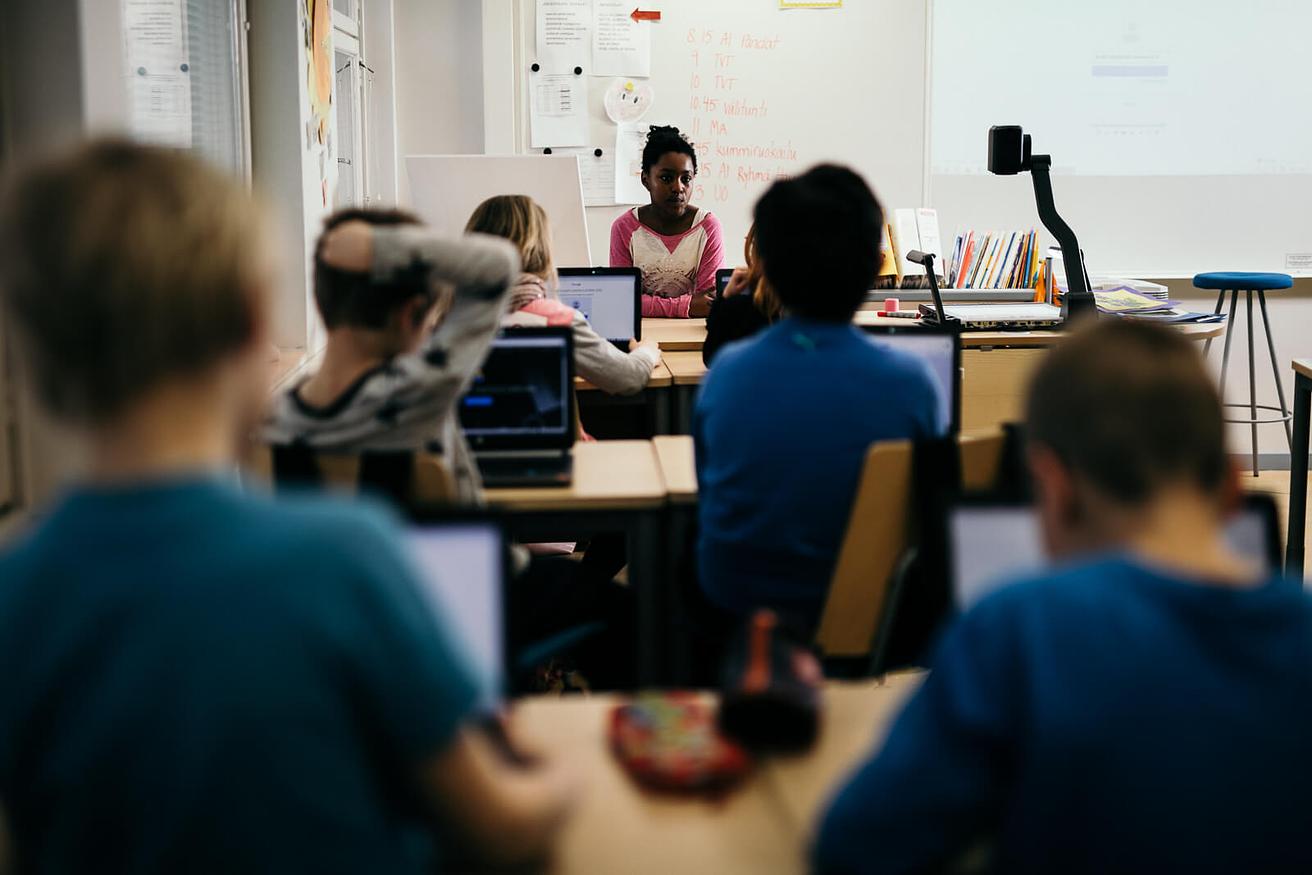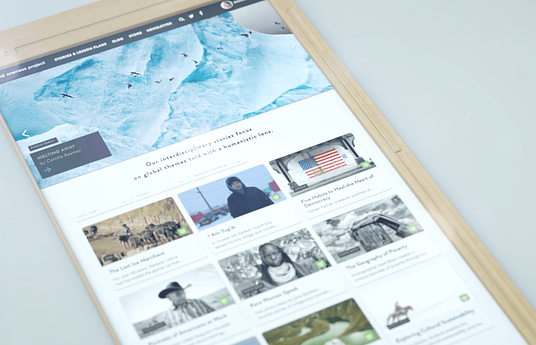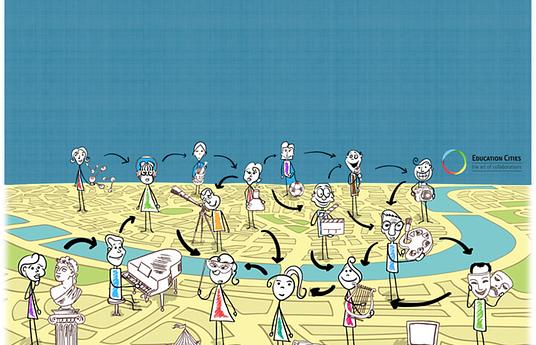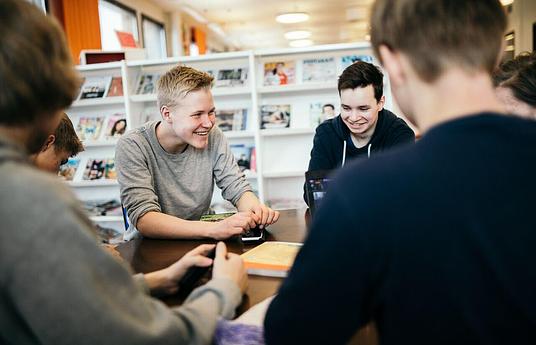Last week at Bett, an education and technology event held annually in London attended by thousands of teachers, students and education professionals, we announced our first global innovations in education! You can find all of them here. In this blog series we’ll be introducing them to you and explaining why we think they’re so important.
Global communication, cooperation and understanding have never been so evidently needed. As some nations head towards divisive policy measures, it is more crucial than ever to educate our young people about tolerance for others who are different from ourselves if we are to fix broken relations between different cultures and peoples.
The world is also becoming increasingly smaller. People are working with each other all over the world, business is conducted on a global level, so it would greatly benefit the next generation to know more about the world and the people in it.
‘In order to innovate you have to be able to collaborate. In order to be a global citizen you have to have empathy and believe in yourself, have resilience (...) these skills are just as important as the traditional subject skills.’ explains Allan Kjaer Andersen, Principal of Ørestad Gymnasium in Copenhagen – a school which is renowned for its innovative learning environment.
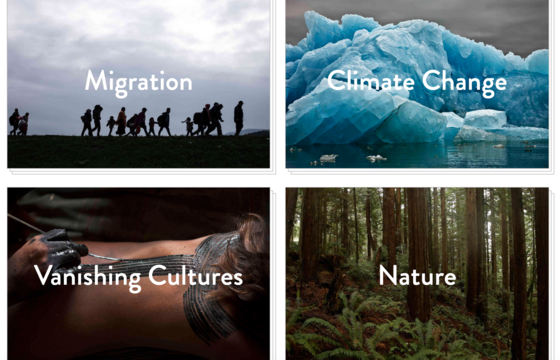
Global Oneness creates beautiful learning materials to be used in schools. The films, photo essays and articles they produce all explore cultural, environmental and social issues and help to introduce children to these complex and important issues. By making students aware of these issues, Global Oneness helps them to be aware of things which effect people all over the world and therefore enable children to become truly global citizens.
All of their content comes with learning materials, unpacking the meaning, importance and educational value of the stories, and they are all free! Which means that a teacher in any classroom anywhere in the world can use these high-quality materials in their lessons. By mixing up the traditional classroom setting with up-to-date and relevant stories, lessons can become more engaging for students and creates a more diverse learning environment.
A new story is released every month, meaning that the content is always fresh and tackles contemporary issues.
For instance, this month’s story is ‘Welcome to Canada’ which tells the story of Mohammed Alsaleh, a Syrian refugee who was granted asylum in 2014, and who now counsels newly arrived refugees.
This level of production maintains the high-quality of the materials whilst not overwhelming teachers with even more work or disturbing curriculums. This could become a simple monthly routine of incorporating it into a lesson plan.
We’re not the only ones to notice their good work, they’ve been featured in National Geographic, The New York Times and The Atlantic among other publications. They are definitely one innovation to keep an eye on and to experiment with yourself!
Traditionally schools act like they are separate from the rest of the world yet simultaneously are trying to prepare children for the world once they finish school. There is a disconnect between the two, which is what Education Cities is working to remedy.
The project enables cities to become learning centres for students so that they can have real-world learning as part of their education. For example, students interested in drama and storytelling can get involved with a local theatre, or those interested in sports can gain experience by spending time with the local soccer team.
Kerrine Bryan, founder of Butterfly Books which publishes picture books to help career awareness be introduced at a young age, discussed the importance of linking industry with education. ‘Get industry into schools and colleges, so that students can see that what they are learning links to real life.’ Too often children don’t understand why they are learning something or how it can be applied to real life. Education Cities helps to link the two firmly together.
The goal of the initiative is to build on a child’s own strengths and to help them discover an area that they excel in.
When this is discovered and developed the child experiences a taste of success, which is necessary for their own personal growth and confidence as Jennifer Camulli, Head of Coordinated Student Services at the International School of Macao, explains, ‘Everyone has the right to experience success in their life and the challenge in schools is to help provide that to students (...) To enter into the adult world without having ever experienced success puts one at a disadvantage.’
Not only does this benefit children, but it helps communities connect with the next generation and build relationships with them so that they are invested in their communities. Education Cities argues that ‘a child who is embraced by the city will reciprocate with love.’
Cities also have their own strengths and growth areas – this must be linked with childrens’ passions and interests so that they compliment each other. If the two are successfully paired up the cities will become growth centres – which benefits the city and the people who live there as there are more opportunities that link up with their passions and skill sets.

Above all things, Education Cities believes that education innovation comes from collaboration which we have to agree with! When we collaborate with each other – whether that’s within a school or outside of it – amazing and exciting things can happen. Connections are made, relationships established and students, communities and schools come to life.
The project was started in Israel, but the appeal is international. Every city in the world has resources that would be useful and inspiring for the students that live there, plus personalisation and student-led learning is not culturally bound – both are key for children all round the world for them to really engage with what they are learning.
Assessment is traditionally an exterior process which is inflicted on children – causing high stress levels at young ages. There has even been seen an increase in mental health issues in our young people, largely linked to the immense stress they are under as they are rigorously examined.
Although the ability to perform under a fair amount of pressure can be good experience, it is not helpful if it is the only way children learn how to be assessed. It fails to build up other skills such as valuable self-assessment skills, and puts far too much pressure on the few hours of their life where they are being assessed.
‘Assessment is valuable to students as a tool to follow, alter and develop their learning. This requires self-regulation and metacognitive skills, which are important in lifelong learning, and so we should be able to define assessment accurately.’ says Kristiina Kumpulainen, Professor of Pedagogy at the University of Helsinki.
Traditional examinations do not allow for this growth and development, it is an end result rather than being a part of a broader process of educational development. The self-assessment model that Blueprints employs allows for children to continually assess and alter their practices as they learn, producing longer term positive effects.
Blueprints, originating in the United States, is an initiative that transforms assessment into a student-led practice. Every day starts with the students setting personal targets for themselves which they then review at the end of the day with their teacher. This practice builds crucial skills like self-awareness, motivation and empowerment; all of which are critical in order to succeed in working life after school as well as helping children to feel more confident.
The student’s goals are set out on their Blueprint – which helps teachers to track their progress and to help them make genuine steps towards reaching their goals by noting down their learning.
Passion projects are chosen by the students themselves which are woven into the curriculum.
Alongside the passion projects students are taught more traditional core academics and have traditional milestones too. The introduction of tailored projects increases engagement as the student’s personal interests are taken into account. Essentially the student has a voice in their own education, which seems like an obvious idea but can actually be often overlooked in mass education systems.
We know this model of assessment works and is worth implementing as studies have shown that when students engage in self-assessment it improves their self-esteem and engagement with learning – surely two major points of education!
